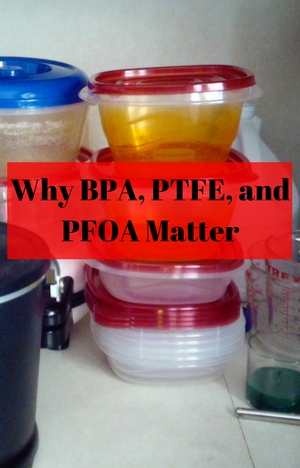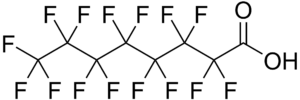 The other day, I had a conversation with a friend about plastic and recycling. I soon found myself looking the plastic containers I had, trying to decipher what kind of plastic it was, the best to recycle and so on.
The other day, I had a conversation with a friend about plastic and recycling. I soon found myself looking the plastic containers I had, trying to decipher what kind of plastic it was, the best to recycle and so on.
Sure enough, the bottles had no less than 5 not-so-clear symbols on them. Seriously, talk about information overload. Sensing this info overkill wouldn’t be confined to only water bottles, I took a closer look at the labels of some of the products in my pantry.
I began to notice a lot of….shall we say….marketing speak/simply senseless messaging.
I mean, what does being all natural really mean? Does any government body actually regulate that? Why do manufacturers slap these labels on?
It turns out I’m not alone in being confused by all the extra extra symbols on food packaging. The National Milk Producers Federation (NMPF) recently launched the Peel Back The Label campaign. The campaign sets out to curb what it refers to as “deceptive food labeling and fear-based marketing”.
For example, by slapping on largely pointless labels, food manufacturers subtly imply that competing products that are not as vocal contain GMO. Seriously, if Himalayan salt is actually salt, a mineral – it doesn’t have any genes to modify. So products like Himalania Pink Salt have zero need for a GMO-free label.
And it’s not only the food industry that’s guilty of this false labeling. Just look at how prominent the practice of greenwashing is in products, from cosmetics to diapers.
With many products already containing a bunch of unpronounceable ingredients, consumers already suspect we’re exposed to many different toxins. Greenwashing only makes it so much harder to know what is truly non-toxic and what isn’t.
So, can we just stop with the fear-based marketing?
As consumers, we need accurate information, not extraneous fluff that only causes more confusion.
This fear-based marketing brings me back to some of the other chemicals that have been vilified over the past few decades.
Remember the brouhaha around plastic, specifically BPA?
Let’s see just how justified that was.
BPA
 First created in 1891, Bisphenol A is combined with other compounds to make polycarbonate plastic and epoxy resin coatings. The clear, shatter-proof product (PVC) created is used in consumer products including headlights, baby bottles, eye glasses etc.
First created in 1891, Bisphenol A is combined with other compounds to make polycarbonate plastic and epoxy resin coatings. The clear, shatter-proof product (PVC) created is used in consumer products including headlights, baby bottles, eye glasses etc.
The other by-product, epoxy resin, is used to line water pipes, as protective coatings on the inside of food and beverage cans. It’s also used in the production of thermal paper used in gas, cash register, ATM receipts. So it’s basically everywhere.
However, scientists found that if plastic containing BPA is exposed to heat, residual BPA is released. Scientists soon linked BPA exposure to a number of health effects in in lab mice. These include hormonal imbalances, breast cancer, genital defects in males, obesity and more.
Citing these effects, some scientists postulated that BPA will have similar effects in humans. The problem with making a theory like this is that animal models, may not be good models for humans.
Scientists cannot ethically reproduce the experiment in humans and till date, there have been no documented cases of BPA-containing plastic actually harming humans.
Are The Fears of The Chemical Overblown?
 Back in 2004, a report from the Harvard Center for Risk Analysis found “no consistent affirmative evidence for low-dose BPA effects.”
Back in 2004, a report from the Harvard Center for Risk Analysis found “no consistent affirmative evidence for low-dose BPA effects.”
The U.S. Food and Drug Administration set a safe daily exposure to BPA at 50 micrograms per kilogram of body weight. These guidelines were drawn up based on the findings that BPA only exhibits toxic effects at very high levels of exposure.
However, on the internet, things are easily taken out of context. Take the 2004 report from the Centers for Disease Control and Prevention which reported that unmetabolized BPA was detected in the urine of 93 percent of 2,517 human subjects.
Taken out of context, this may cause one to immediately bin every bit of plastic around you.
However, remember all the products we said BPA is used in? Common items like cans of food and beverage, paint, hard plastic drinking containers, sports safety equipment and so much more.
With a one-time exposure, BPA is quickly metabolized and excreted. However, repeated exposure leads to measurable, elevated levels in the body. The chemical also tends to bioaccumulate in water bodies.
See why there would be high levels of BPA in our bodies?
Now, with such widespread exposure, you’d expect to see numerous problems already afflicting humans.
But there are none.
Seriously till date, there has been no direct link between BPA exposure and disease in humans.
This hasn’t stopped governments from England to Canada banning BPA containing baby bottles, based on its potential to disrupt the endocrine system. But calling for a total ban on BPA doesn’t make much sense as the current evidence shows that BPA is absorbed, detoxified, and quickly eliminated from the body via urine, in humans.
In January 2015, the European Food Safety Authority released a (1,000 page) risk assessment report on BPA stating that “there is no health concern for any age group from dietary exposure and low health concern from aggregated exposure.”
BPA in Waffle Makers?
Folks, if you want to minimize your exposure, there are many other places to check than your waffle maker.
Why?
Remember we said the quality of BPA that enables its use in plastic is because it’s clear, lightweight and shatter-resistant? These are qualities you’ll find in products like water bottles, juicers, food containers, but not in a waffle maker. It’s simply not the same type of plastic.
Bottom line – BPA isn’t as harmful as it’s painted to be. And it’s not even used in making appliances like a waffle iron.
PTFE
 Another chemical that has got a bad rap, is Polytetrafluoroethylene (PTFE) or as it’s commonly (and incorrectly known) Teflon.
Another chemical that has got a bad rap, is Polytetrafluoroethylene (PTFE) or as it’s commonly (and incorrectly known) Teflon.
Every home cook knows just how important having good non-stick cookware is.
Oh, the joys of making pancakes and omelettes and requiring only a little oil, making fry-ups actually….healthier.
Also, is there anyone that actually likes to scrape burnt-on food off an appliance?
We all know just how convenient it is to clean non-stick surfaces.
So what does this have to do with Teflon and PTFE?
Everything.
PTFE is what confers the non-stick quality on cookware and non-stick appliances. The interior coating is made from a compound called Polytetrafluoroethylene or PTFE.
Teflon is simply a registered trademark of the DuPont (now The Chemours Company) that was used to classify its range of PTFE coatings.
Now users of non-stick cookware already know how to make their pans last longer, by following 3 simple rules:
- Do not use a metal implement to pick food out.
- Do not use cooking spray.
- Do not allow food to burn and get stuck on the surface.
Sounds straightforward, right?
The same rules apply to appliances with non-stick surfaces, from waffle makers to panini presses.

Yet people still use metal implements to pick out food, causing microscopic scratches in the coating, eventually releasing flecks and bits of the non-stick coating into your food.
Yuck.
But don’t worry as PTFE is an inert substance, that is also used in surgery. Ingesting tiny quantities of it will not cause any harm.
Yet there are many vocal groups, online and offline, proclaiming that cooking in a scratched non-stick pan releases carcinogens.
That’s not 100% true.
When a non-stick surface is heated to very high temperatures, it starts to outgas i.e. give off a as a gas. The fumes given off have been linked to causing the death of pet birds and a flu-like feeling in humans.
There is currently no research that proves that heating PTFE-coated surfaces can cause cancer. Here are the facts:
The non-stick coatings of cookware and appliances will start to break down when exposed to high temperatures of around 200°C.
As the material is heated above 260°C, it starts to release vapors and gas. These gases are toxic to birds as they have weaker, fragile respiratory systems. In humans, they cause an illness knows as Polymer Fume Fever or Teflon flu. This condition is characterized by headaches, nausea and damage to the respiratory tract in humans.
Those are the facts around PTFE as they stand today, so simply saying non-stick pans and appliances are dangerous to human health is more fear-based marketing. As with BPA, there hasn’t been any evidence linking ingestion to cancer.
Regarding the overheating, in most cooking scenarios, you won’t get to that temperature. Sure, heating to high temperatures is the best way to get crispy waffles and avoid soggy bottoms, but are you getting close to PTFE-breakdown temps?
Short answer : No.
Why?
Waffle makers have their cooking temperatures regulated by a built-in thermostat. Some do have adjustable temperature controls to help with browning, but they don’t tell you how hot the surface is getting.
Digging deeper into the science of waffle making, our research shows that waffles are best cooked between temperatures of 190°C and 215°C. This means you are not getting to PTFE-breakdown temperatures.
Here are the recommended temperature ranges from 2 popular waffle maker brands:
- The Proctor Silex Belgian Waffle Maker (26070) bakes waffles at 226°C.
- The Cuisinart WMR-CA Classic Waffle Maker, with adjustable temperature setting, heats up to around 221°C on its max setting and drops around 4°C per setting as one dials down the heat, with the lowest setting reading around 115 and 138°C.
You see, perfectly safe temperatures.
Like with BPA, it’s a case of casual observers making huge ‘logical’ leaps and arriving at far-fetched conclusions.
With the hue and cry surrounding Teflon, who would have thought PTFE was harmless to humans?
However, while it has proven inconclusive that BPA and PTFE are pretty much harmless compounds, there is one compound that you must be wary of.
PFOA
 Perfluorooctanoic acid (PFOA), also known as C8, is a synthetic chemical used in the process of making non-stick coating for cookware, packaging materials and stain-resistant coatings.
Perfluorooctanoic acid (PFOA), also known as C8, is a synthetic chemical used in the process of making non-stick coating for cookware, packaging materials and stain-resistant coatings.
PFOA is actually burned off during the process of applying it to non-stick surfaces. It’s not present in significant amounts in the final products.
So why are we even discussing it?
Well, PFOA has been identified as a carcinogen in animals, and has been linked to lower birth weights, and detrimental effects on human livers, hormones and immune systems.
In studies of humans, it has been shown that people exposed to PFOA in the workplace, are at higher risk of developing kidney, testicular and bladder cancers.
You may think, “I don’t work in a factory so I’m safe.”
Not really.
As a synthetic substance, PFOA isn’t easily broken down or degraded by natural processes; this means it persists indefinitely in the environment.
Seriously, I’m talking a long, long, long time.
In 2005, the EPA classified it as a likely carcinogen and urged that companies eliminate its use by 2015.
That would have been awesome, but it has since been discovered that the factories that produced fluorochemicals like PFOA dumped substantial quantities into the soil and water surrounding these sites. Even the smoke spewed into the air eventually settles on the ground and through rainfall, travels through the soil to mix with groundwater.
Once in groundwater, these compounds can be transported very long distances. PFOA has been discovered in water and soil samples as far away as the open ocean and even the Arctic caps! It has also been detected in the tissues of wildlife living in secluded and protected conservation areas.
PFOA is also known as C-8, due to its chain of eight carbon atoms, each bonded to fluorine. Its ‘indestructibility’ arises from this strong carbon-fluorine bond is extremely strong. So once released into the environment, it can stay ….. forever.
Scientists haven’t found ways to neutralize it. Animals & plants can’t metabolize it either.
This means it’s everywhere; studies show that most Americans have PFOA in the blood, and (alarmingly) babies show trace amounts at birth.
Before you dismiss this as a far-fetched idea, think about this: how often do corporations admit liability and pay out huge fines?
Yet, in February 2017, DuPont (creators of Teflon), reached a a $671 million settlement with residents of the communities near its plant in Parkersburg, W.Va. Residents had sued the company for contaminating their drinking water with PFOA, and claimed they had developed illnesses based on said contamination. In fact, a scientific panel funded by DuPont provided evidence that PFOA exposure can be linked to diseases including cancer, high cholesterol and thyroid disease.
Yikes!
Remember how we said PFOA is persistent and present in many of the things you use every day.
But while it’s present in everyday consumer products, FDA testing reports that exposure to PFOA via a non-stick surfaces is negligible as the manufacturing process causes PFOA to evaporate.
While manufacturing restrictions on PFOA have led to no ‘new PFOA’, there is still the issue of managing the sheer quantities of the chemical already in the environment.
So, Should You be Worried?
In conclusion, our constant search for improvement will give us great discoveries and products but progress is also bound to bring along a numerous of unknowns.
Take BPA for example, taking steps to limit your BPA exposure is probably a good idea, especially if you’re pregnant. But for us non-preggo folks, the fear of BPA is frankly overblown.
We can blame the media, marketing hype or poor science reporting for how these compounds have been blamed for causing diseases, when there is simply no proof. But rather than trade blame, let’s remind ourselves of what we know about these chemicals:
- BPA can cause hormonal disruption in mice, is found in many of the products we use but has no proven effect on humans. Plus your waffle maker doesn’t have any transparent polycarbonate plastic (PVC is present in appliances like a food processor, coffee maker, juicers, espresso machines etc).
- PTFE will break down and outgas if exposed to temperatures over 260°C. The fumes given off cause a temporary flu-like feeling in humans and is fatal to birds. But your waffle iron will not reach those temps under normal circumstances, thanks to an internal thermostat.
- PFOA is one to be mindful of as it’s a chemical that is not degraded in nature (or in the lab, for that matter). Its tendency to accumulate in the body and its estimated half-life of between 2-9 years, means it stays in humans for a long long time.
A 2016 statement released by the EPA, based on peer-reviewed studies reports that “exposure to PFOA, over certain levels may result in adverse health effects, including developmental effects to fetuses during pregnancy or to breastfed infants, low birth weight in newborns, kidney cancer, liver tissue damage, compromised antibody production and other effects.”
Wow.
Folks, stay safe out there, always read labels and it doesn’t hurt to do a little wholesome research as well. But at least, you can breathe a little easier knowing that you’re not going to be exposed to it from your waffle maker.
Time for a celebratory waffle, amirite?!!
Thank you for reading and I welcome your comments below.